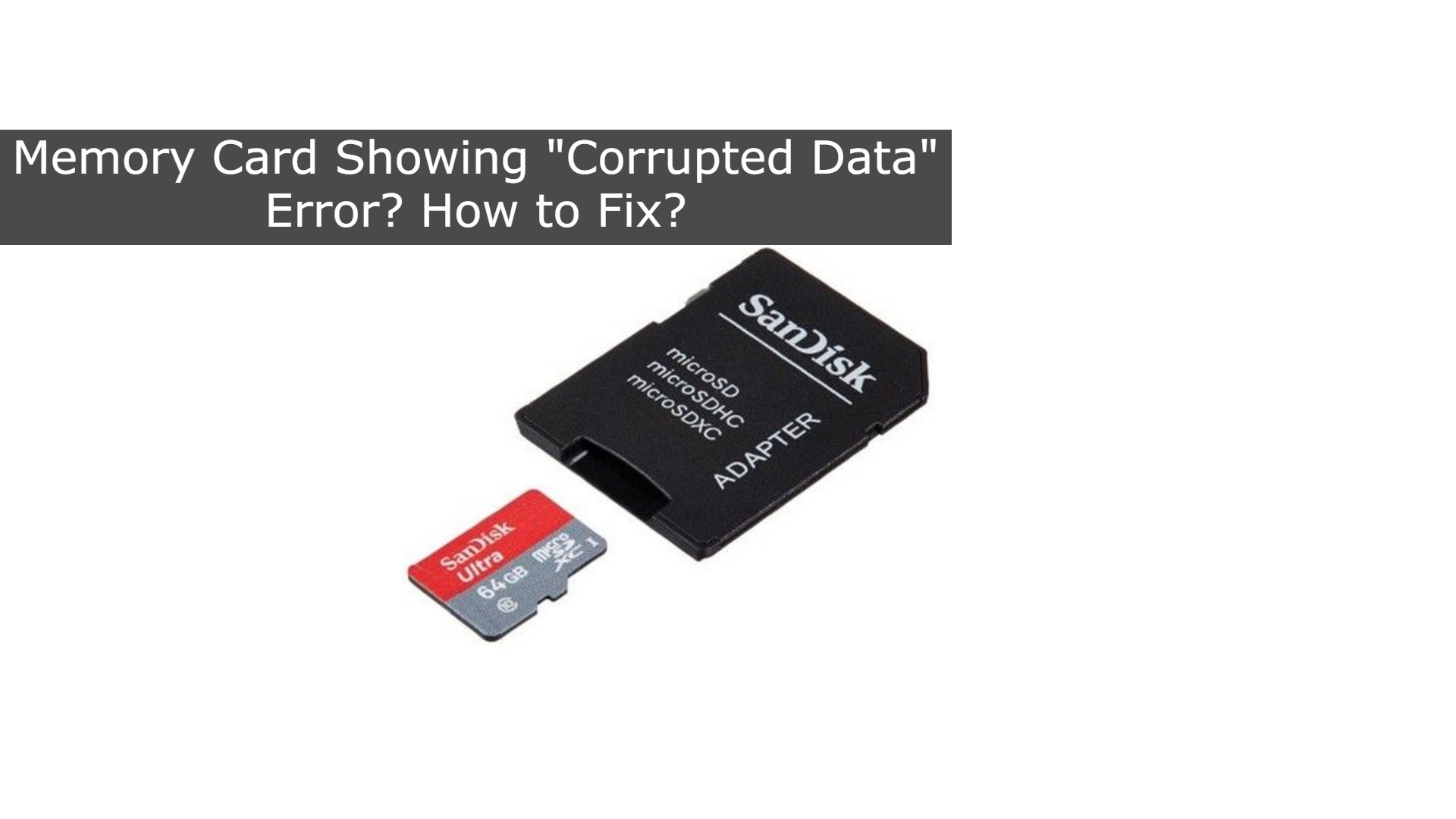Latest News
Memory Card Showing “Corrupted Data” Error? How to Fix?

If you’ve ever lost data from an SD card because of file corruption or user error, you know how frustrating that can be. Photos, documents, music, and videos are usually stored on these kinds of cards. You can replace certain data, such as documents you typed or music you downloaded and saved. However, replacing them will not be an easy or quick process. This feeling of losing these important files can be extremely frustrating. It is even more heartbreaking when it is irreplaceable data, like your wedding photos or vacation videos. It is possible in many cases to retrieve data from memory cards with the advances in memory card recovery.
In the coming years, the ability to memory card recovery will become easier as technology advances. A few years ago, only highly experienced programmers or computer technicians could retrieve lost data. With computer software, the majority of people can recover memory cards from their homes. Free software is available in some cases, but if you wish to recover data that is difficult to recover, you may have to buy a program.
Keeping photos on a digital storage device, such as a memory card, is an essential part of our modern life. We store the photos digitally so you can retrieve them whenever you need to refresh your memory or perhaps from a professional perspective. Nevertheless, memory loss and opportunities can be robbed from you if your stored information or storage medium is corrupted. With advanced card recovery techniques, you can get these files back.
Pictures, music, and videos that are stored on the storage media become inaccessible when it is damaged. This is not acceptable under any circumstances. A variety of error messages often occur when attempting to access a storage medium, indicating logical corruption or file loss. Here is one of these error messages:
There is “Corrupted Data”
Among other types of storage media, compact flash cards and SD cards show this error message.
Grounds of the Issue
A corrupted memory card is to blame for the behavior described in the error message. Several data structures are included on the card to manage data, make data access easy, and to process the data quickly. Damage to these data structures results in the loss of access to stored files.
What can be done when a Memory Card is Corrupted?
The data structures of damaged memory cards can be fixed by formatting them. However, it cannot prevent the possibility of data loss, even though it can solve most of these problems. In fact, formatting removes all files from a memory card and leads to complete data loss, necessitating further recovery of the files.
It is possible for a memory card to become corrupted for various reasons, including improper handling of the media, turning off the camera when the writing process is in progress, virus infection, or ejecting the card before the camera is turned off. When you are going to use Card Recovery Software, you need to ensure that it can recover files from any device.
By using advanced scanning techniques, the Memory Card Recovery applications will perform a thorough scan of the damaged card to recover any lost data. An easy recovery is provided by a graphical user interface, so no technical skills are required. Due to their read-only and non-destructive behavior, these programs do not alter any original data on the media.
The file system table in your computer creates an entry for that particular file when it is saved on memory, just as it does when you save it to the hard drive of your computer. A file entry contains information about the file name, storage location, file size, and pointer to the file. The camera’s operating system uses the file pointer to locate and access files in memory. Deleted files are only deleted as their pointers. Until they are overwritten, lost photos remain physically intact.
The use of third-party recovery applications are not required to retrieve deleted photos if you have a complete and updated backup.
Kenneth is a proud native of sydney, born and raised there. However, he pursued his education abroad and studied in Australia. Kenneth has worked as a journalist for almost a decade, making valuable contributions to prominent publications such as Yahoo News and The Verge. Currently, he serves as a journalist for The Hear Up, where he focuses on covering climate and science news. You can reach Kenneth at [email protected].










